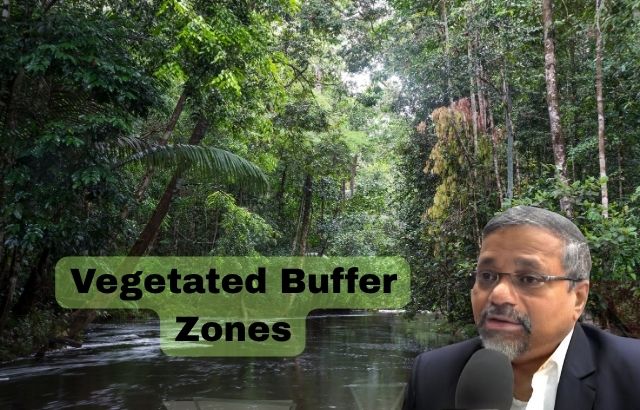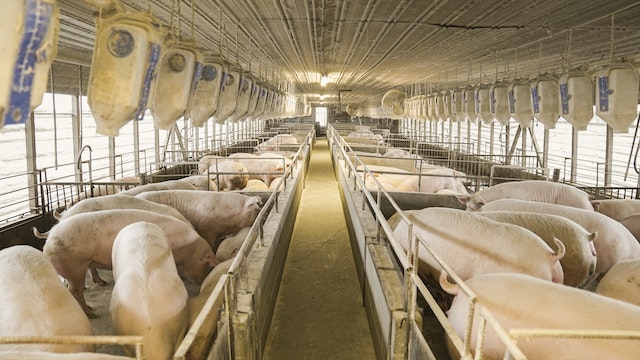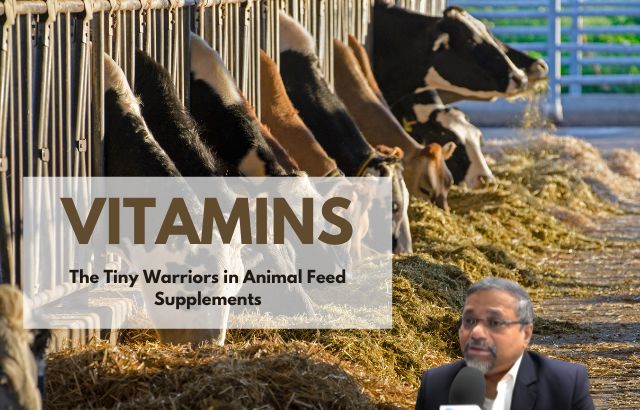Vegetated buffer zones, or riparian buffers, are strips of natural vegetation planted along the edges of water bodies such as rivers, lakes, and streams. These areas act as natural filters, helping reduce pollution runoff, prevent soil erosion, and provide critical habitats for wildlife. Buffer zones are an essential tool for maintaining water quality, particularly in agricultural areas or locations impacted by human activities.
In this blog, we will explore the importance of vegetated buffer zones, how they work, and how to implement them effectively.
What Are Vegetated Buffer Zones?
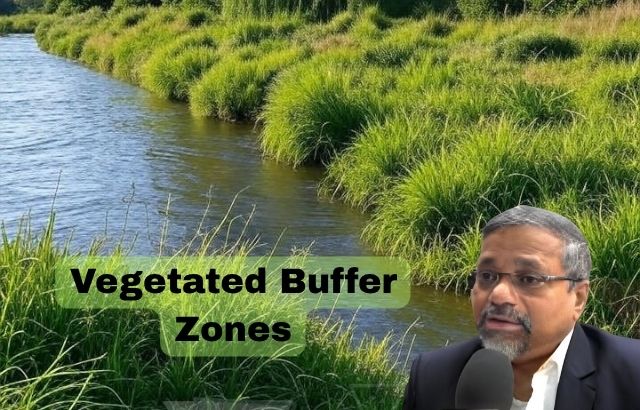
Vegetated buffer zones are areas of land covered with plants (trees, shrubs, grasses) positioned next to water bodies. These zones are designed to intercept and filter out harmful pollutants like nutrients (nitrogen, phosphorus), pesticides, and sediments that might otherwise be washed into the water.
They are usually located between agricultural fields, urban areas, or developed lands and bodies of water. The plant roots, stems, and leaves work to trap contaminants before they reach the water, promoting healthier ecosystems and improving water quality.
Benefits of Vegetated Buffer Zones
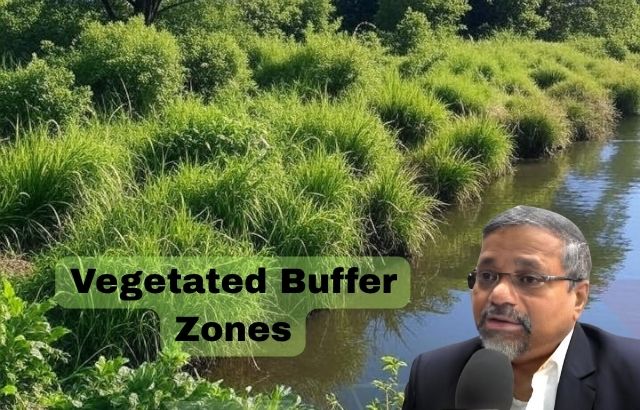
- Water Quality Improvement: By filtering runoff from surrounding areas, buffer zones prevent harmful substances, including fertilizers and pesticides, from entering nearby water sources. This helps reduce eutrophication, the process that leads to algal blooms and decreased oxygen levels in water.
- Soil Erosion Control: Vegetated buffers help stabilize the soil along streambanks and shorelines, reducing erosion and the loss of valuable topsoil into waterways.
- Wildlife Habitat: These buffer zones provide essential habitat for a variety of species. Birds, insects, and aquatic animals benefit from the vegetation, which serves as food, shelter, and breeding areas.
- Flood Mitigation: Buffer zones also help to slow down water movement, absorbing excess rainfall and reducing the potential for flooding by increasing water infiltration.
How to Create an Effective Vegetated Buffer Zone
- Choose the Right Location: Buffer zones should be located between agricultural or urban land and water bodies. The wider the buffer, the better the results in terms of filtering pollutants and providing habitat.
- Select Native Plants: Native vegetation is ideal as it is well-adapted to the local climate and soil conditions. Native grasses, shrubs, and trees also support local wildlife and require less maintenance over time.
- Determine the Width: The width of a buffer zone can vary, but research suggests a minimum of 30 feet for small streams and up to 100 feet or more for larger rivers or lakes. A wider buffer typically provides more benefits.
- Layered Planting: A well-structured buffer zone includes a mix of trees, shrubs, and grasses. Trees offer deep-root systems that stabilize the soil, while grasses and shrubs help filter nutrients and pollutants near the surface.
- Maintenance and Monitoring: Regularly check the buffer zone for any invasive species that might threaten native plants and monitor for signs of erosion or pollution that the buffer isn’t filtering effectively.
Examples of Vegetated Buffer Zones in Action
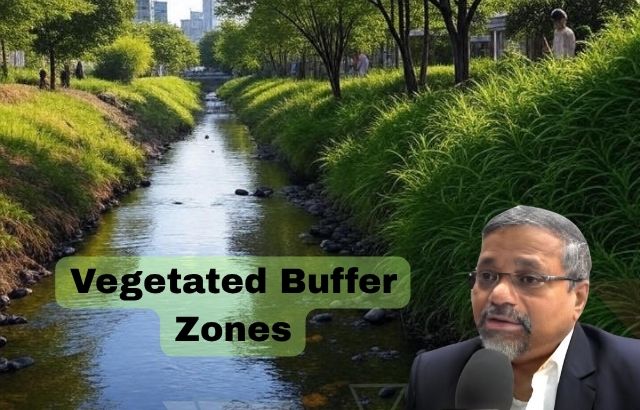
- Agricultural Buffers Along Rivers: In rural farming communities, vegetated buffer zones are often created along rivers to filter agricultural runoff. These buffers help reduce nutrient pollution from fertilizers, which can contribute to harmful algal blooms and low oxygen levels in aquatic ecosystems.
- Urban Streamside Buffers: In urban areas, vegetated buffers are being used to filter runoff from parking lots and roads. By planting trees and shrubs along streams, cities reduce the amount of stormwater runoff that would otherwise carry pollutants like oil and heavy metals into water bodies.
- Riparian Buffers in Forested Areas: Many forested areas use vegetated buffer zones to protect the water quality of nearby lakes and rivers. These zones not only filter pollutants but also maintain the natural hydrological balance of the ecosystem.
Frequently Asked Questions (FAQs) About Vegetated Buffer Zones
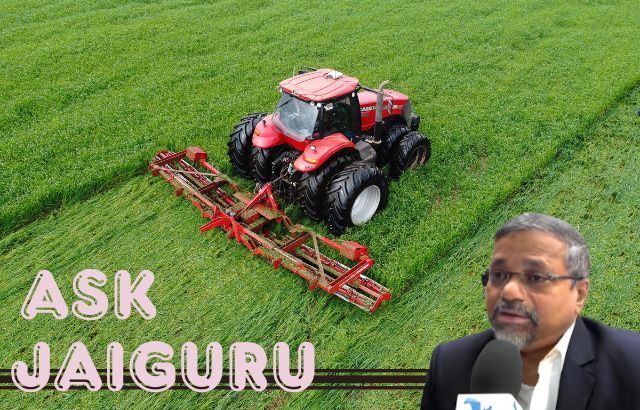
Q1: What is the main purpose of a vegetated buffer zone?
A1: The main purpose of a vegetated buffer zone is to filter pollutants from runoff before they reach water bodies. They help improve water quality, prevent soil erosion, and provide habitats for wildlife.
Q2: How wide should a vegetated buffer zone be?
A2: The width of the buffer zone can vary depending on the size of the water body and the surrounding land use. However, a minimum of 30 feet is recommended for small streams, and larger buffers (up to 100 feet or more) are ideal for bigger rivers and lakes.
Q3: Can vegetated buffer zones prevent flooding?
A3: Yes, vegetated buffer zones can help reduce flooding by slowing down the movement of water, absorbing excess rainfall, and allowing more water to infiltrate into the soil rather than running off into streams or rivers.
Q4: Are buffer zones only for agricultural areas?
A4: No, buffer zones can be implemented in any land use type, including urban areas, forests, and suburban environments. They are particularly effective along agricultural fields, roads, and urban developments near water bodies.
Q5: How do vegetated buffer zones benefit wildlife?
A5: Buffer zones provide essential habitats for wildlife, including birds, insects, and amphibians. The diverse vegetation in these zones offers food, shelter, and breeding grounds, which are important for supporting biodiversity.
Q6: What types of plants should be used for a buffer zone?
A6: Native plants are the best choice for vegetated buffer zones, as they are adapted to local conditions and support local wildlife. A mix of trees, shrubs, and grasses will create a layered effect that maximizes the zone’s filtering capabilities.
Q7: Do vegetated buffer zones require a lot of maintenance?
A7: Once established, vegetated buffer zones require minimal maintenance. However, regular monitoring is needed to ensure invasive species don’t take over and to check for signs of erosion or pollution.
Conclusion
Creating vegetated buffer zones is a powerful and sustainable solution for protecting water quality, reducing erosion, and supporting biodiversity. Whether in agricultural, urban, or natural settings, these zones provide vital ecological benefits that improve the health of our waterways and ecosystems. By implementing and maintaining vegetated buffer zones, we can work towards a healthier, more resilient environment for future generations.

